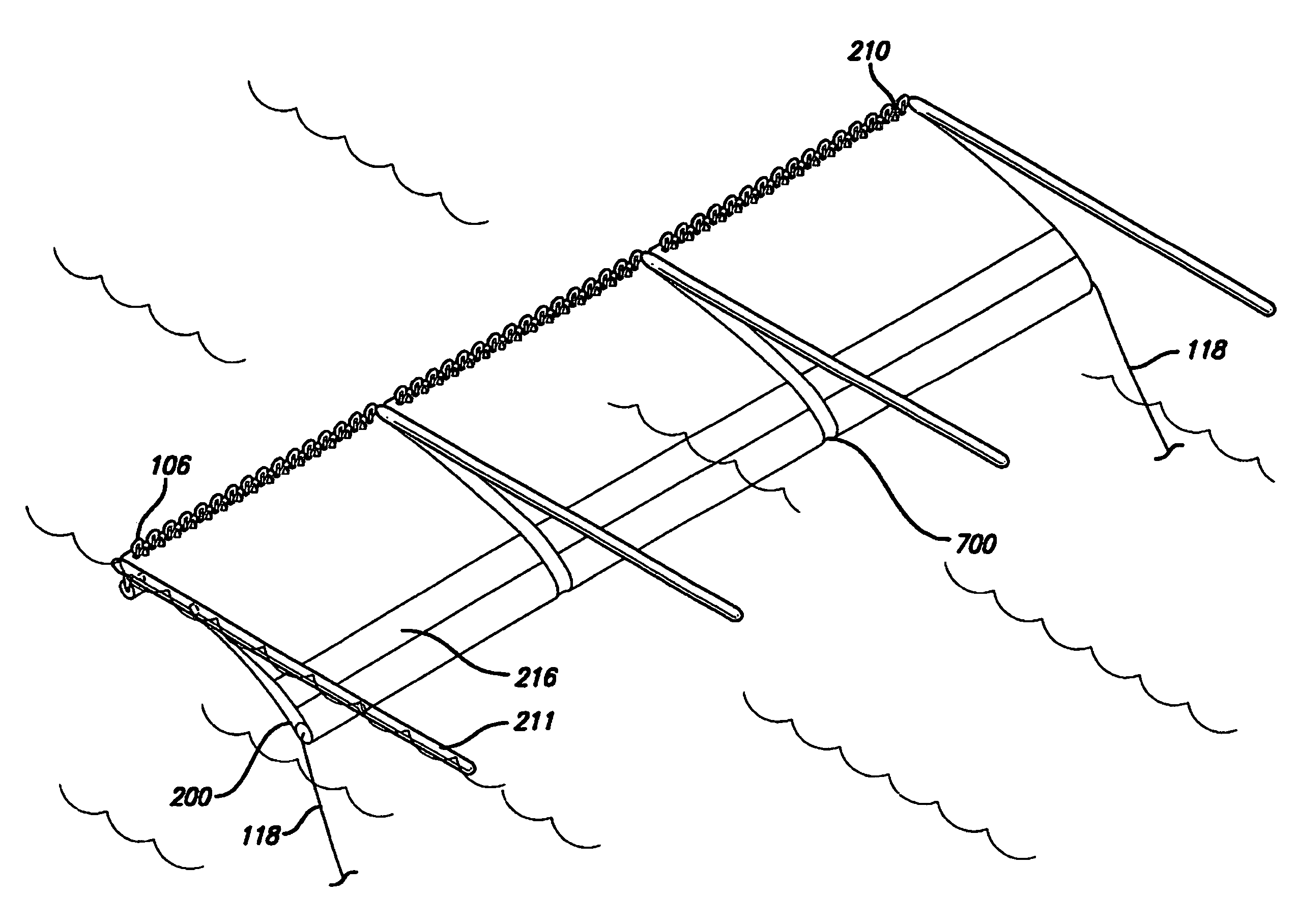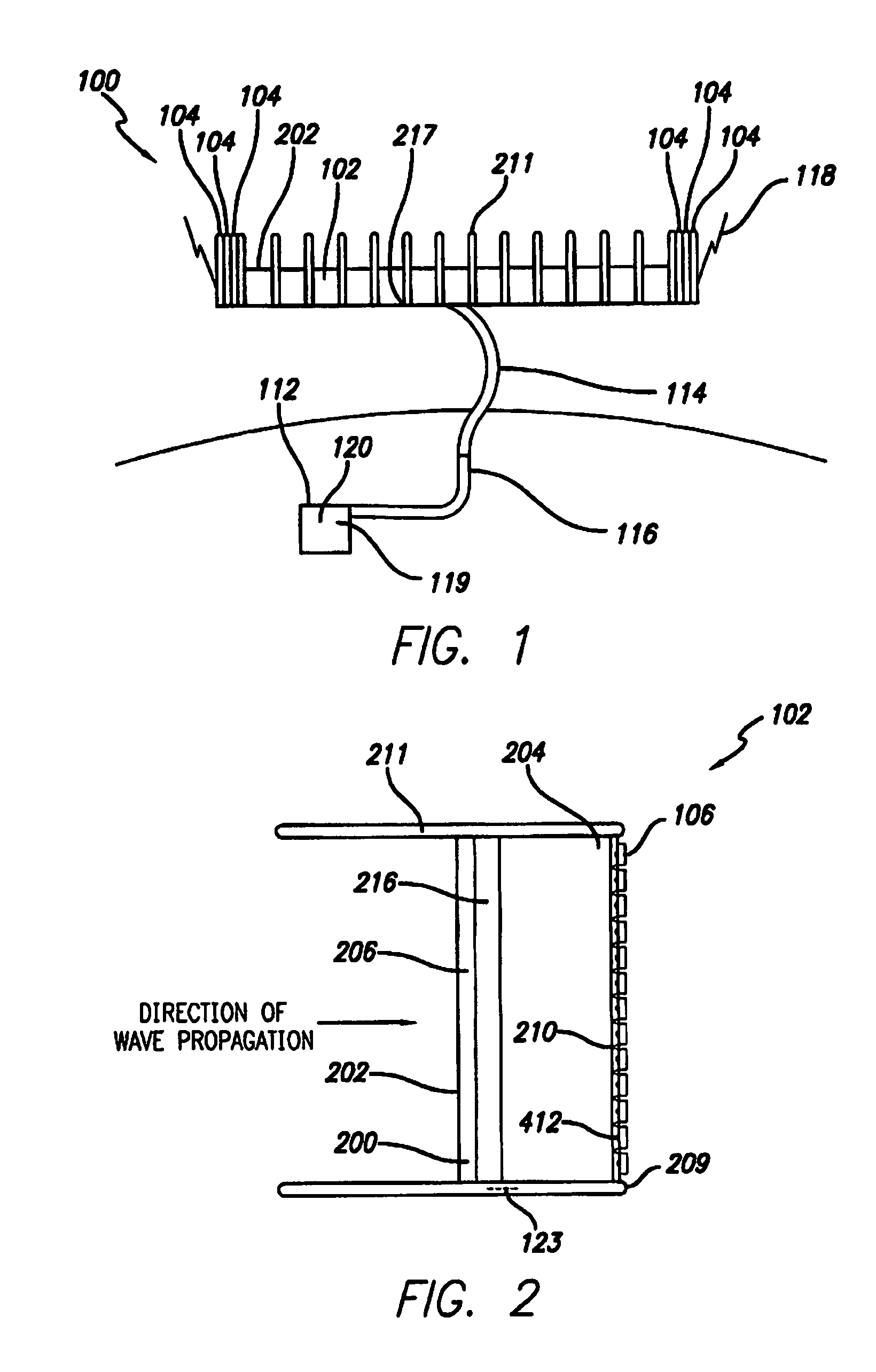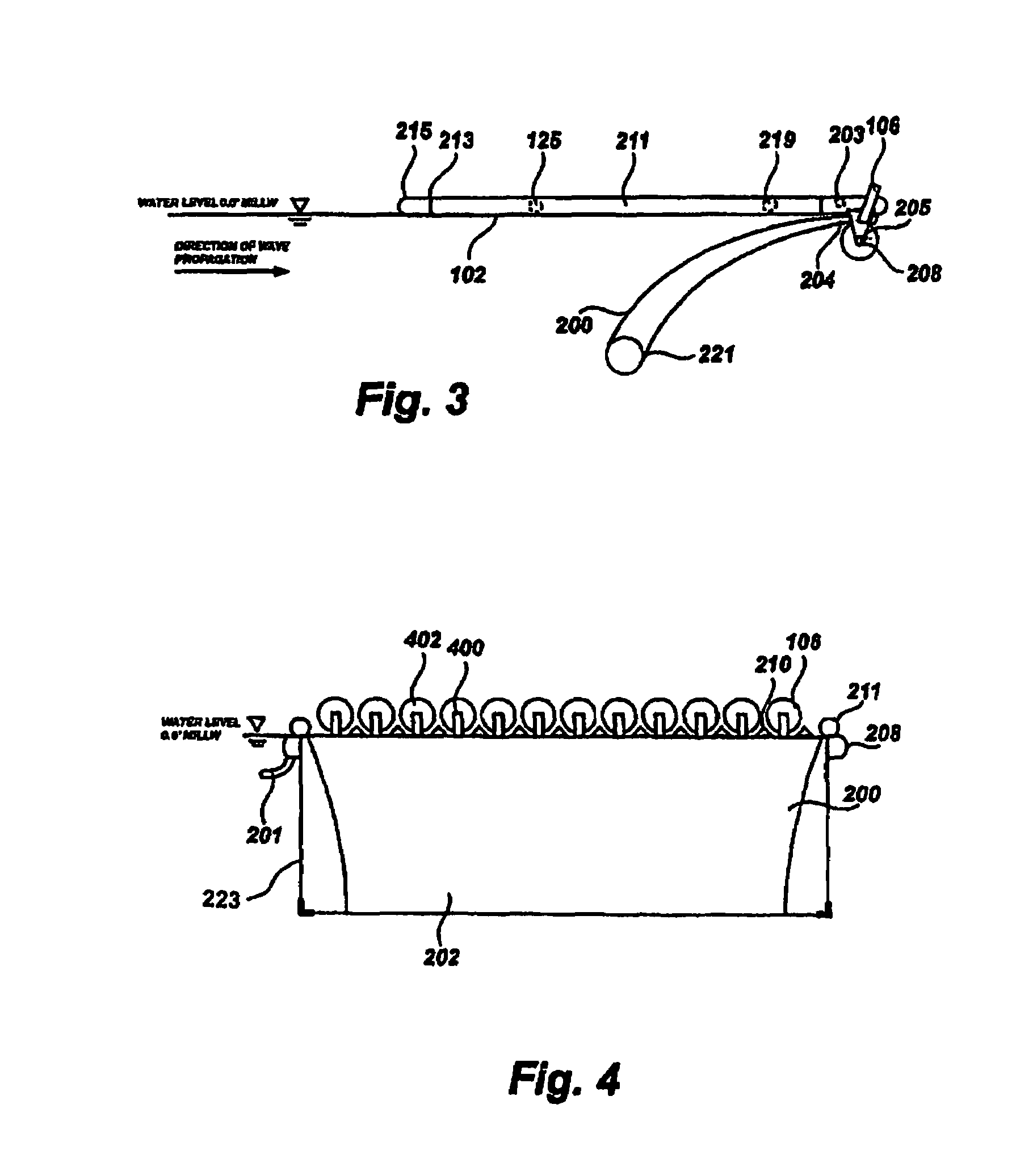Ocean power harvester
a power harvester and ocean technology, applied in the field of energy, can solve the problems of increasing the absolute cost of carbon-based fuels, alaska and the north sea are about to enter a period of irreversible decline, and the overall efficiency of the power harvester is more important than the overall surface area
- Summary
- Abstract
- Description
- Claims
- Application Information
AI Technical Summary
Benefits of technology
Problems solved by technology
Method used
Image
Examples
Embodiment Construction
FIGS. 1A and 1B—Preferred Embodiment
[0121]The following is a detailed description of illustrative embodiments of the present invention. As these embodiments of the present invention are described with reference to the aforementioned drawings, various modifications or adaptations of the methods or specific structures described may become apparent to those skilled in the art. All such modifications, adaptations, or variations that rely upon the teachings of the present invention and through these teachings have advanced the art, are considered to be within the spirit and scope of the present invention.
[0122]FIG. 1 is a top view of a long, semi-submerged floating Array of Devices 100 composed of a plurality of individual and identical Ocean Energy Modules (the invention) 102 deployed and connected beam to beam. Each end of the Array of Devices 100, composed of several Ocean Energy Modules 102, is moored to the ocean bottom through high buoyancy Support Vessels 104. The individual Ocean...
PUM
 Login to View More
Login to View More Abstract
Description
Claims
Application Information
 Login to View More
Login to View More - R&D
- Intellectual Property
- Life Sciences
- Materials
- Tech Scout
- Unparalleled Data Quality
- Higher Quality Content
- 60% Fewer Hallucinations
Browse by: Latest US Patents, China's latest patents, Technical Efficacy Thesaurus, Application Domain, Technology Topic, Popular Technical Reports.
© 2025 PatSnap. All rights reserved.Legal|Privacy policy|Modern Slavery Act Transparency Statement|Sitemap|About US| Contact US: help@patsnap.com



